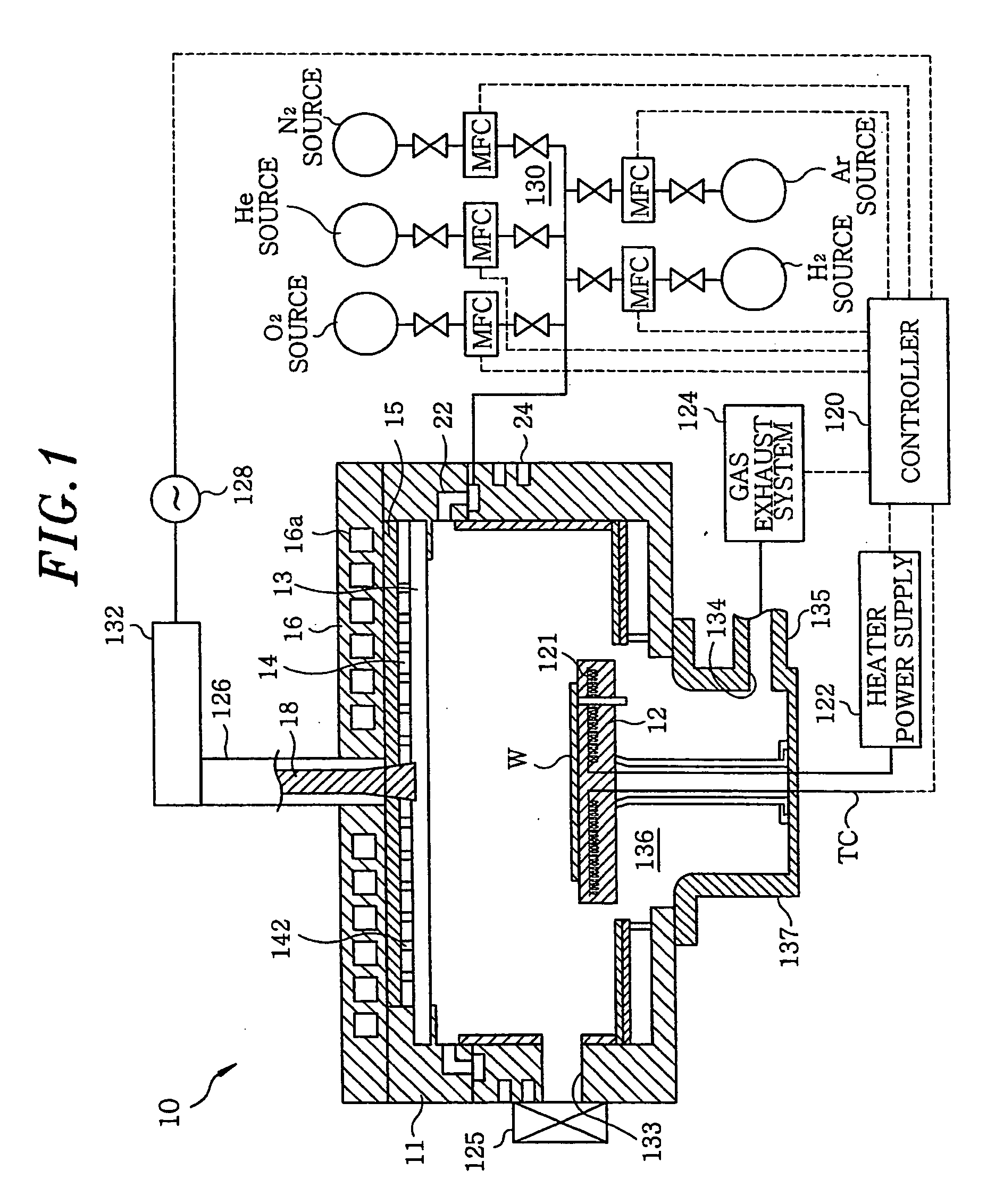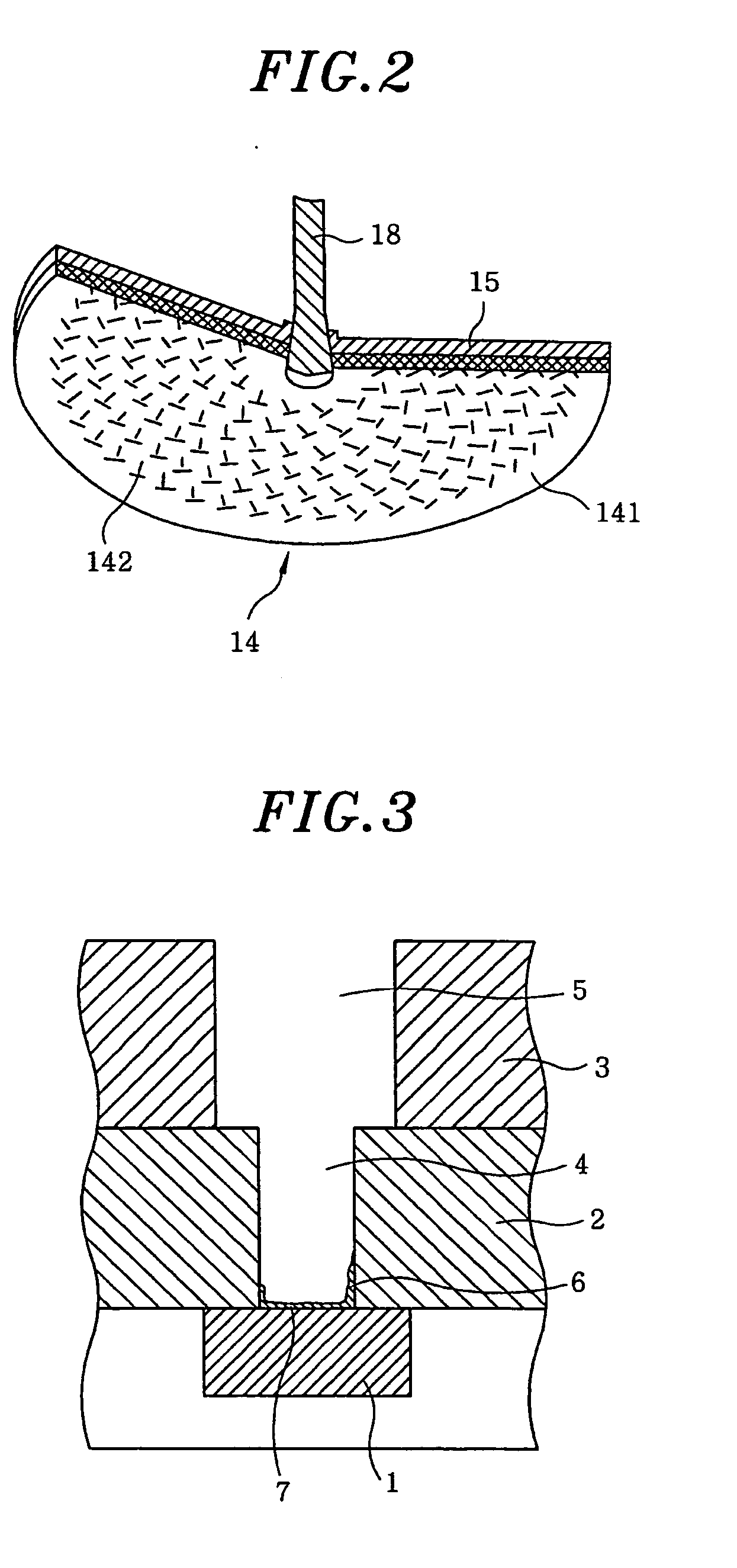Method of cleaning semiconductor substrate conductive layer surface
- Summary
- Abstract
- Description
- Claims
- Application Information
AI Technical Summary
Benefits of technology
Problems solved by technology
Method used
Image
Examples
Embodiment Construction
[0028] Hereinafter, a preferred embodiment in accordance with the present invention will be described with reference to accompanying drawings.
[0029]FIG. 1 shows a cross sectional view of a high density plasma processing apparatus 10 used for cleaning a dual damascene structure. FIG. 2 illustrates a partial cutaway perspective view of a slot plate installed in the high density plasma processing apparatus shown in FIG. 1.
[0030] The high density plasma processing apparatus 10 includes a processing chamber 11 having a substrate support 12 for supporting a semiconductor wafer W of a dual damascene structure. Gas in the processing chamber 11 is exhausted from an exhaust pipe 135 to a gas exhaust system 124 via a gas exhaust opening 136, an exhaust chamber 137 and an exhaust pipe opening 134. Further, the substrate support 12 includes a heater 121 for heating the semiconductor wafer W. The heater 121 is driven by an external heater power supply 122.
[0031] At an upper portion of the proc...
PUM
 Login to View More
Login to View More Abstract
Description
Claims
Application Information
 Login to View More
Login to View More - R&D
- Intellectual Property
- Life Sciences
- Materials
- Tech Scout
- Unparalleled Data Quality
- Higher Quality Content
- 60% Fewer Hallucinations
Browse by: Latest US Patents, China's latest patents, Technical Efficacy Thesaurus, Application Domain, Technology Topic, Popular Technical Reports.
© 2025 PatSnap. All rights reserved.Legal|Privacy policy|Modern Slavery Act Transparency Statement|Sitemap|About US| Contact US: help@patsnap.com



